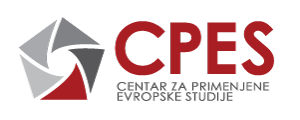DEVELOPMENT, EXPANSION AND MAINTENANCE OF ELECTRONIC PLATFORMS INTENDED FOR THE HEALTHCARE SYSTEM (2021)
The four public procurement procedures in question are related to the development, expansion and maintenance of electronic platforms intended for the healthcare system in Serbia. These cases represent an example of market division between bidders, which is one form of bid rigging, while on the other hand we can also view this as a case of favoring economic entities close to the authorities.
Namely, although all four procedures were conducted as open procedures, i.e. as procedures that imply the widest possible competition, in all four procedures only one (and always the same!) group of bidders submitted bids. The group consisted of three Belgrade based companies, “Telekom Srbija”, “MedIT” and “NITES”. In the absence of competition, this group of bidders was awarded contracts worth a total of around five million euros (excluding VAT) in all four procedures. Moreover, if we look back a few years, the members of this group were the only ones to participate and receive contracts in all procedures conducted by the Ministry of Health from 2016 until today, which related to the same or similar subject of procurement.*
Also, although the conditions in terms of technical and professional capacity favored the mentioned group of bidders, none of the interested parties tried to change these conditions through the request for clarification of the tender documentation, nor did they state the request for protection of rights. In other words, none of the potential bidders was at all interested in these procurements of substantial estimated values.
All of this indicates that this particular procedure was a clear case of market division, where market participants obviously had some kind of an agreement according to which certain bidders agree not to participate in procurement procedures with certain contracting authorities or in certain geographical regions. Despite the fact that the division of the market is one of the forms of competition violation, in this case neither the Commission for Protection of Competition reacted, nor other competent institutions such as the Public Procurement Office or the State Audit Institution.
Another interesting fact in this case is the closeness of the holder and one member of the said group of bidders with the governing structures. Namely, “Telekom Srbija” is in majority state ownership, and as a national telecommunications operator it is by definition close to the government. On the other hand, the executive director of the Czech branch of the company “NITES” is Bojan Kisić, the brother of the current Minister of Labor, Employment, Veterans and Social Policy Darija Kisić Tepavčević, and the husband of the former Minister of Justice Nela Kuburović. Although in this particular case, in accordance with the Public Procurement Law and the Law on Prevention of Corruption, there was no conflict of interest (which was confirmed by the Agency for Prevention of Corruption only after the media reports), the fact that certain members of the group are connected with the government can certainly not be considered irrelevant from the aspect of favoring these economic entities. This is especially true if we take into account the requested conditions of technical and professional capacity that favored this particular group of bidders.
The consequences of this tender rigging and favoring bidders close to the authorities are a complete lack of competition and a significant outflow of budget funds. Such behavior of procurement participants, among other things, harms taxpayers, reduces public confidence in the competitiveness of the procedure and minimizes the advantages of a competitive market. In such circumstances, it is practically known in advance to whom the contract will be awarded and as a direct consequence of that, public procurement loses any sense.
* In addition to this group of bidders, there was only one public procurement procedure with 2 other bidders – the procurement of the National Medical Platform for Prevention and Diagnostics from 2016 (JN 07/2016).



